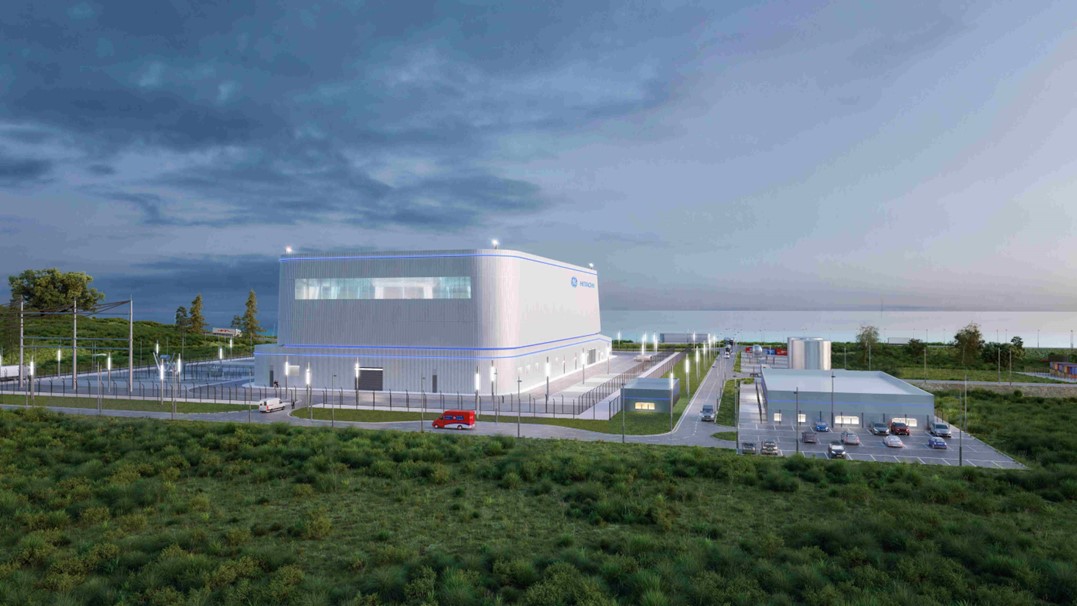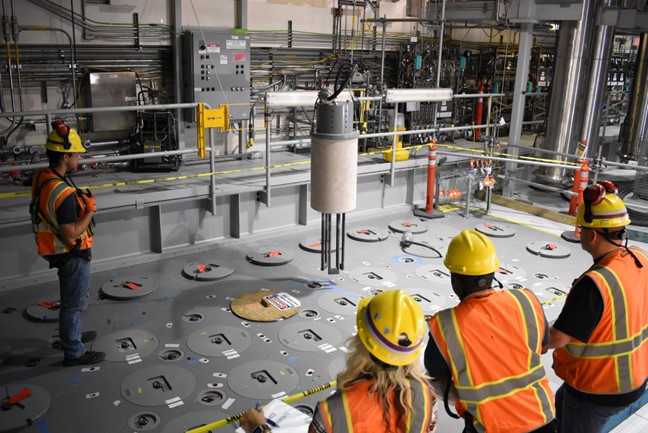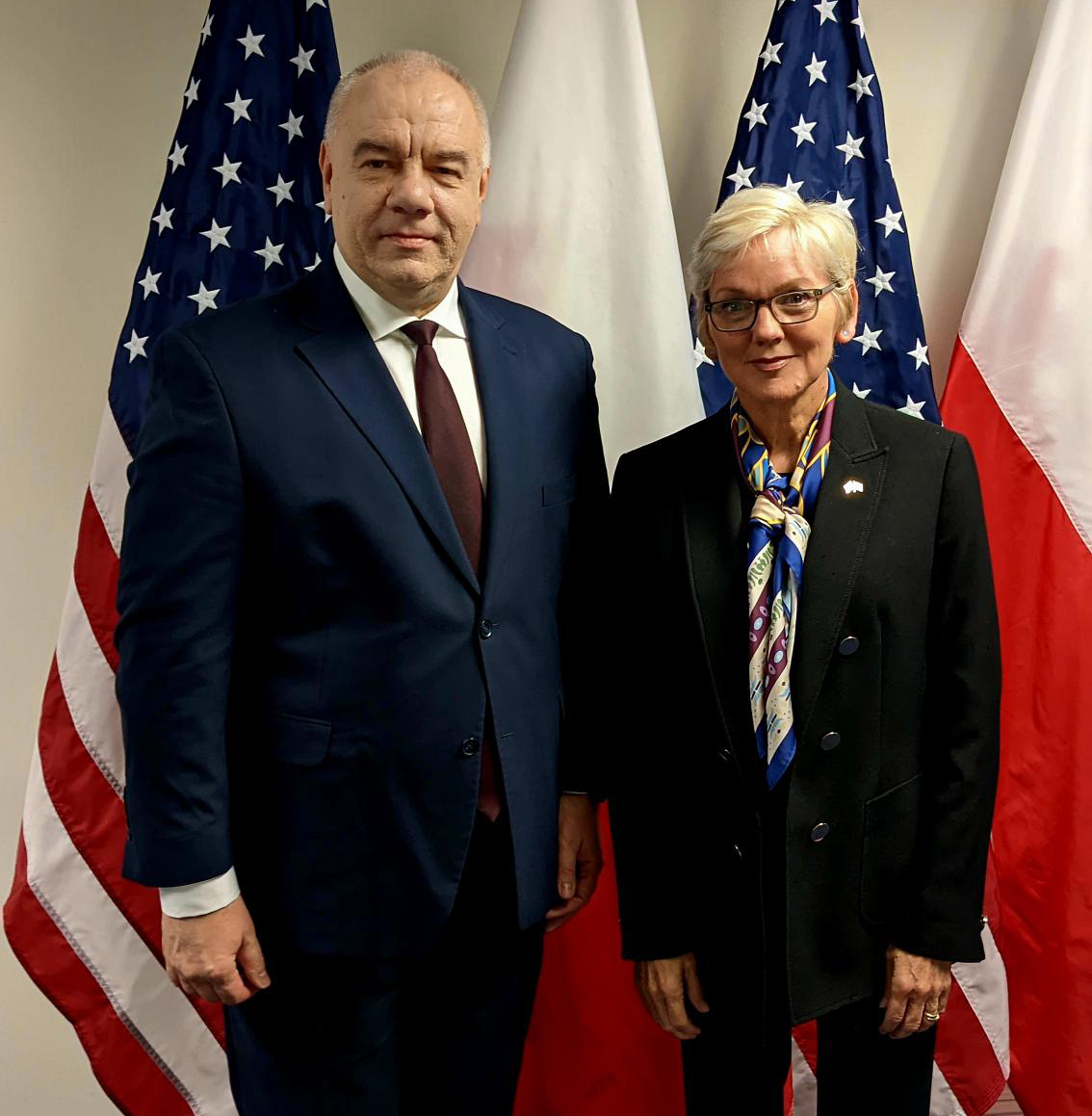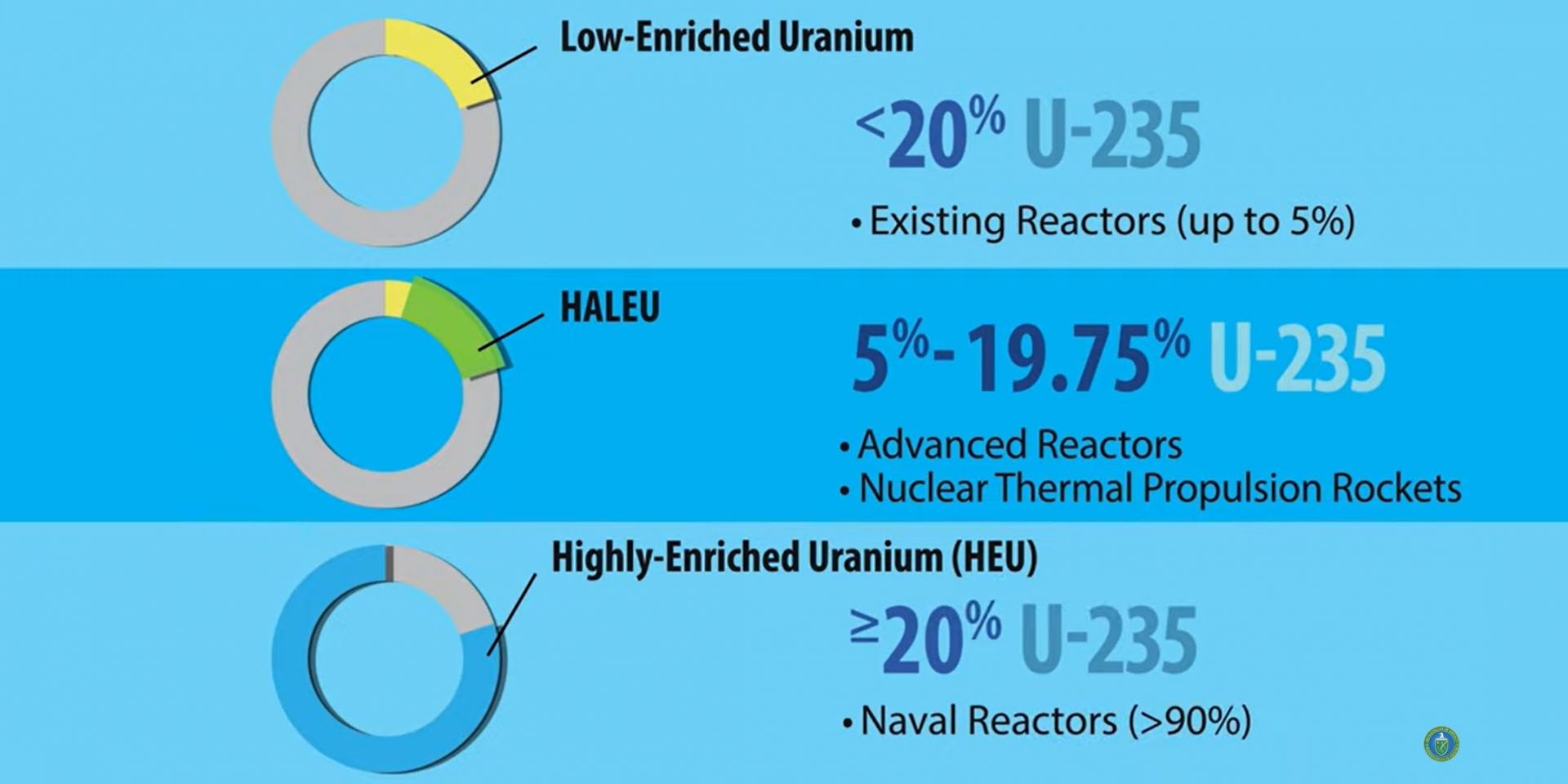An artist’s rendering of Natrium. (Image: TerraPower)
Nuclear technology firm TerraPower and utility partner PacifiCorp have launched a study to evaluate the feasibility of deploying up to five additional Natrium reactor and integrated energy storage systems in the utility’s service territory by 2035, the companies announced yesterday. (PacifiCorp’s business units—Pacific Power and Rocky Mountain Power—serve customers in California, Oregon, and Washington, and in Idaho, Utah, and Wyoming, respectively.)
A screenshot of the Interactive Isotopes App from the ANS website depicting U-235 and its decay chain. (Graphic: ANS)
In the summer of 2019, three students from the University of South Carolina–Aiken (USCA) had an idea to digitize the isotope. Wei Zheng, Drake Jones, and Joseph Taylor set out to design an app that would be an interactive one-stop shop for information about any isotope—number of protons and neutrons, whether it is stable or radioactive, its natural abundance on earth, and even its uses. From these ideas, the Interactive Isotopes App began to take shape.
The app’s launch was disrupted by the COVID-19 pandemic; although it was complete after three years of work and development, the creators sat on it. On October 12, the app at long last went live on the ANS website.
Framatome’s GAIA fuel assembly with Protect EATF technologies. (Photo: Framatome)
Framatome has completed the second 18-month cycle of its GAIA Protect Enhanced Accident Tolerant Fuel (EATF) technology at Vogtle’s Unit 2 in Waynesboro, Ga. Inspections afterward revealed that the full-length chromium-coated fuel rods maintained their original characteristics, while the chromia-enhanced pellets operated as designed during 36 months of reactor operation.
Artist’s rendering of a BWRX-300 plant. (Image: GE Hitachi Nuclear Energy)
Canada Infrastructure Bank (CIB) has finalized an agreement with Ontario Power Generation, committing C$970 million (about $715 million) to Canada’s first small modular reactor, to be located at OPG’s Darlington nuclear power plant in Clarington, Ontario.
A state-owned enterprise founded in 2017, CIB is charged with financially supporting revenue-generating infrastructure projects in the public interest via public-private partnerships. The agreement with OPG is the bank’s largest investment in clean power to date, according to a Tuesday joint announcement.
Workers install one of 18 startup heaters into Melter 1 of Hanford’s Low-Activity Waste Facility. (Photo: Bechtel National)
Heating of the first waste vitrification melter at the Department of Energy’s Hanford Site was paused after operators identified an “abnormal condition with the startup heater power supplies,” the DOE’s Office of River Protection (ORP) said. Heat-up of the 300-ton melter, which will be used to vitrify Hanford’s low-level radioactive tank waste, was initiated on October 8.
Secretary Granholm, center, leads breaking the ground for the SIPRC at ORNL, along with (from left) ORNL site manager Johnny Moore, ORNL director Thomas Zacharia; DOE undersecretary for science and innovation Geraldine Richmond; and DOE Office of Science director Asmeret Asefaw Berhe. (Photo: Genevieve Martin/ORNL/DOE)
The Department of Energy held a groundbreaking ceremony on October 24 for the Stable Isotope Production and Research Center (SIPRC) at Oak Ridge National Laboratory in Tennessee. The center is being built to expand the nation’s capability to enrich stable isotopes for medical, industrial, and research applications.
Natrium Fuel Facility groundbreaking. (Photo: GNF-A)
Global Nuclear Fuel–Americas (GNF-A) and TerraPower announced their plans to build a Natrium fuel fabrication facility next to GNF-A’s existing fuel plant near Wilmington, N.C, on October 21. While more than 50 years of fuel fabrication at the site have supported the boiling water reactor designs of GE (GNF-A’s majority owner) and GE Hitachi Nuclear Energy (GEH), the Natrium Fuel Facility will produce metallic high-assay low-enriched uranium (HALEU) fuel for the sodium fast reactor—Natrium—that TerraPower is developing with GEH.
A rendering of the six-module Carbon Free Power Project planned for construction in Idaho. (Image: NuScale)
NuScale Power announced October 20 that the Nuclear Regulatory Commission’s Advisory Committee on Reactor Safeguards (ACRS) issued a letter the previous day agreeing with NRC staff’s approval of NuScale’s methodology for determining the plume exposure pathway emergency planning zone (EPZ). As approved, the methodology would permit a smaller EPZ—dependent on site-specific conditions, including seismic hazards—that provides the same level of protection to the public as the 10-mile radius EPZs used for existing U.S. nuclear power plants.
At Bangladesh’s Rooppur plant, a Liebherr-11350 heavy caterpillar crane raises the reactor vessel to Unit 2’s transportation portal. (Photo: Rosatom)
In case anyone forgot, Russia can build nuclear power plants, not just occupy them—as discussed a week ago on Newswire. Last week in Bangladesh, workers completed the installation of the reactor pressure vessel (RPV) for the second unit at the Rooppur construction site.
A rendering of the GA fusion pilot plant. (Image: GA)
General Atomics (GA) announced on October 20 that it has developed a steady-state, compact advanced tokamak fusion pilot plant concept “where the fusion plasma is maintained for long periods of time to maximize efficiency, reduce maintenance costs, and increase the lifetime of the facility.”
Caption: From top left: Stewart, Rampal, Peterson, Bernstein, and Souza participate in the ANS YMG’s “Nuclear Entrepreneurship” webinar.
This year, Nuclear Science Week was October 17–21, and the ANS Young Members Group celebrated by hosting the virtual event “Nuclear Entrepreneurship” on October 18. Panelists were Per Peterson, cofounder and chief nuclear officer of Kairos Power; Robbie Stewart, cofounder of Boston Atomics; Kelsey Souza, chief operating officer of Ultra Safe Nuclear; and Tyler Bernstein, chief executive officer of Zeno Power. The event was moderated by Brett Rampal, director of nuclear and power strategy at Veriten and chief technical analyst at Segra Capital Management.
Kris Singh (left), president and CEO of Holtec International, and Young-Joon Yoon, president and CEO of Hyundai E&C. (Photo: Holtec International)
Holtec International and Hyundai Engineering & Construction (a Hyundai Motor Group subsidiary) have signed an accord to accelerate the completion of Holtec’s SMR-160 small modular reactor development program, as well as to collaborate on diverse clean energy technologies.
A rendering of the SHINE medical isotope production facility planned for construction in Veendam, the Netherlands. (Image: SHINE)
SHINE Europe, a subsidiary of Wisconsin-based SHINE Technologies, will work with the Netherlands’ University Medical Center Groningen (UMCG) and Delft University of Technology (TU Delft) to produce a variety of terbium isotopes for use in nuclear medicine under a grant proposal approved by the Dutch government on October 17.
The decommissioning of ORNL’s aging research reactors is clearing the stage for future missions at the site.
An aerial photograph of Oak Ridge National Laboratory’s “Reactor Hill,” with, from left to right, reactor buildings 3042, 3005, and 3010. The DOE and its contractors are removing these excess contaminated facilities to eliminate risks and clear land for future research missions. (Photos: UCOR)
The Department of Energy and its environmental cleanup contractor United Cleanup Oak Ridge (UCOR) are poised to meet critical milestones as they continue to move to the next generation of cleanup at Oak Ridge National Laboratory in Tennessee. On ORNL’s main campus, crews on “Reactor Hill”—so named because of the four remaining reactor facilities on that hillside—and at the Experimental Gas-Cooled Reactor (EGCR) just east of the campus continue rigorous schedules as they enter a new phase of progress in the cleanup program.
A view of the Savannah River Site’s H Area. (Photo: DOE)
The Department of Energy’s Office of Environmental Management (EM) announced on October 18 that it has begun the process of transferring primary authority of South Carolina’s Savannah River Site (SRS) to the National Nuclear Security Administration, with the transfer expected to be completed in 2025.
An image from the video “What is High-Assay Low-Enriched Uranium (HALEU)?” released by the DOE in April 2020. (Source: DOE)
Another piece of the plan for meeting the urgent need for high-assay low-enriched uranium (HALEU) to fuel advanced reactor deployments fell into place when the Department of Energy held an Industry Day on October 14. Attendees were asked how soon they could deliver 25 metric tons per year of HALEU enriched in the United States from newly mined uranium. Offtake contracts for six or more years of HALEU production at that rate could be used to stock a DOE-owned HALEU bank to “support [HALEU] availability for civilian domestic research, development, demonstration, and commercial use.”




















